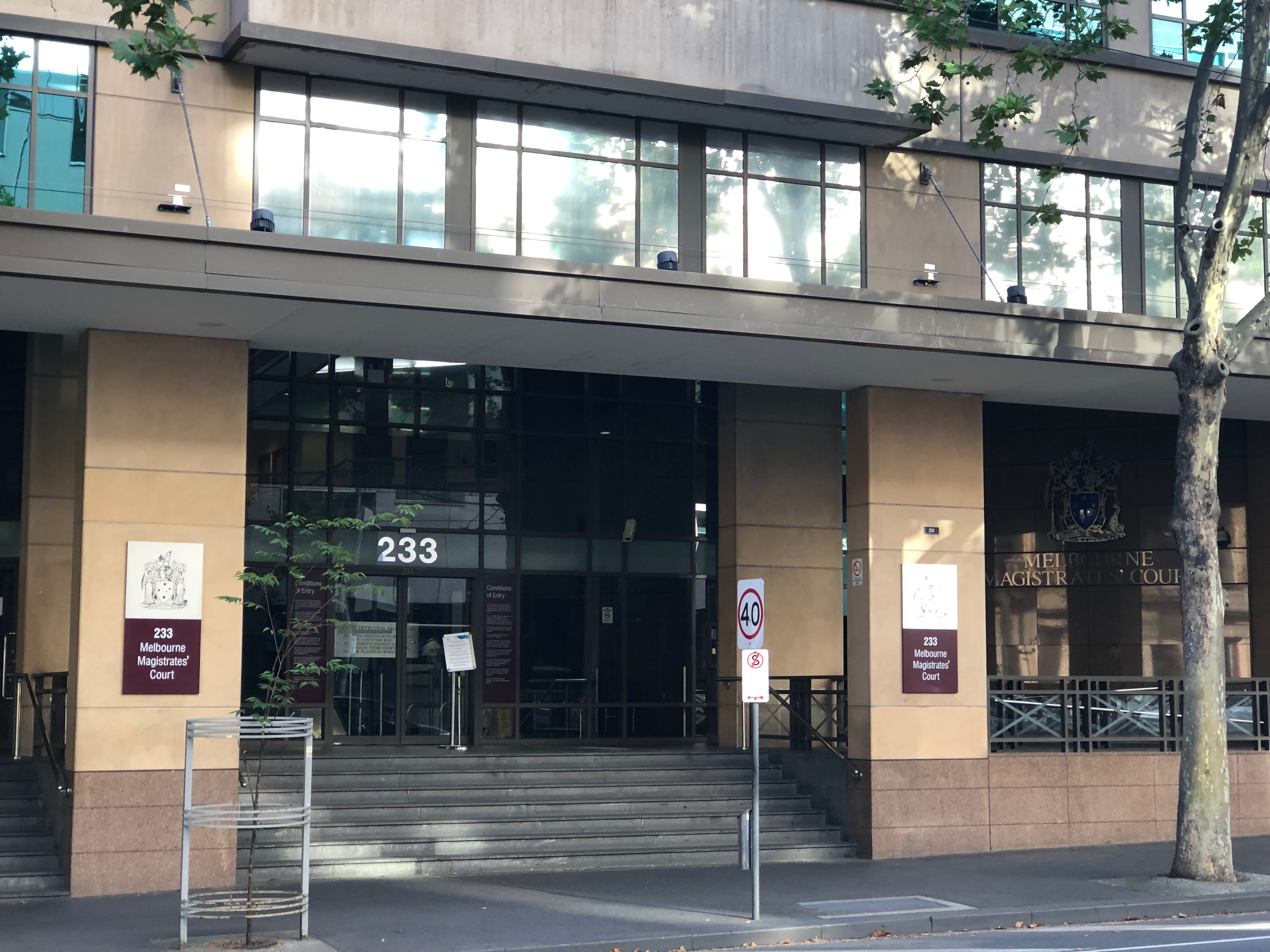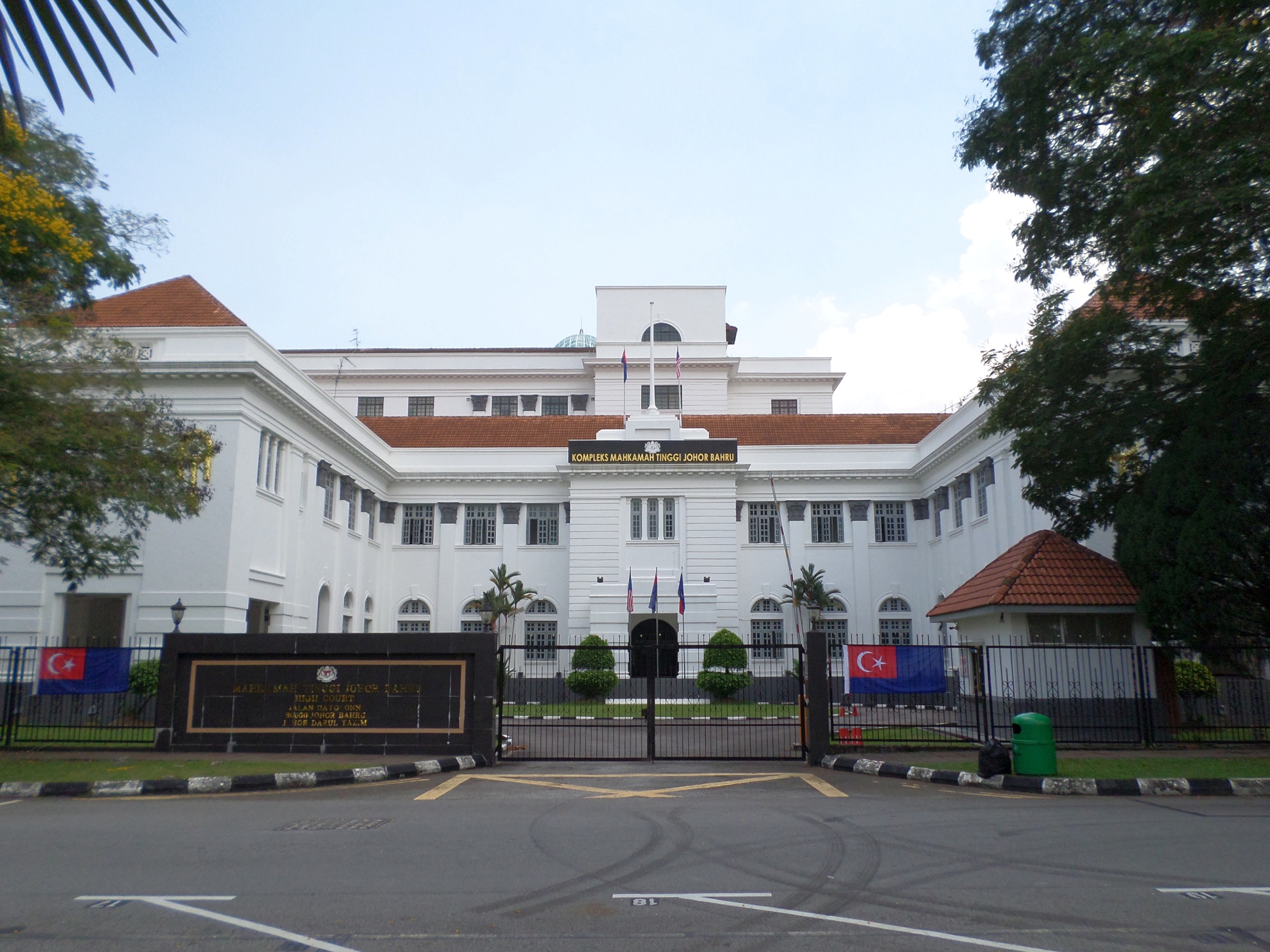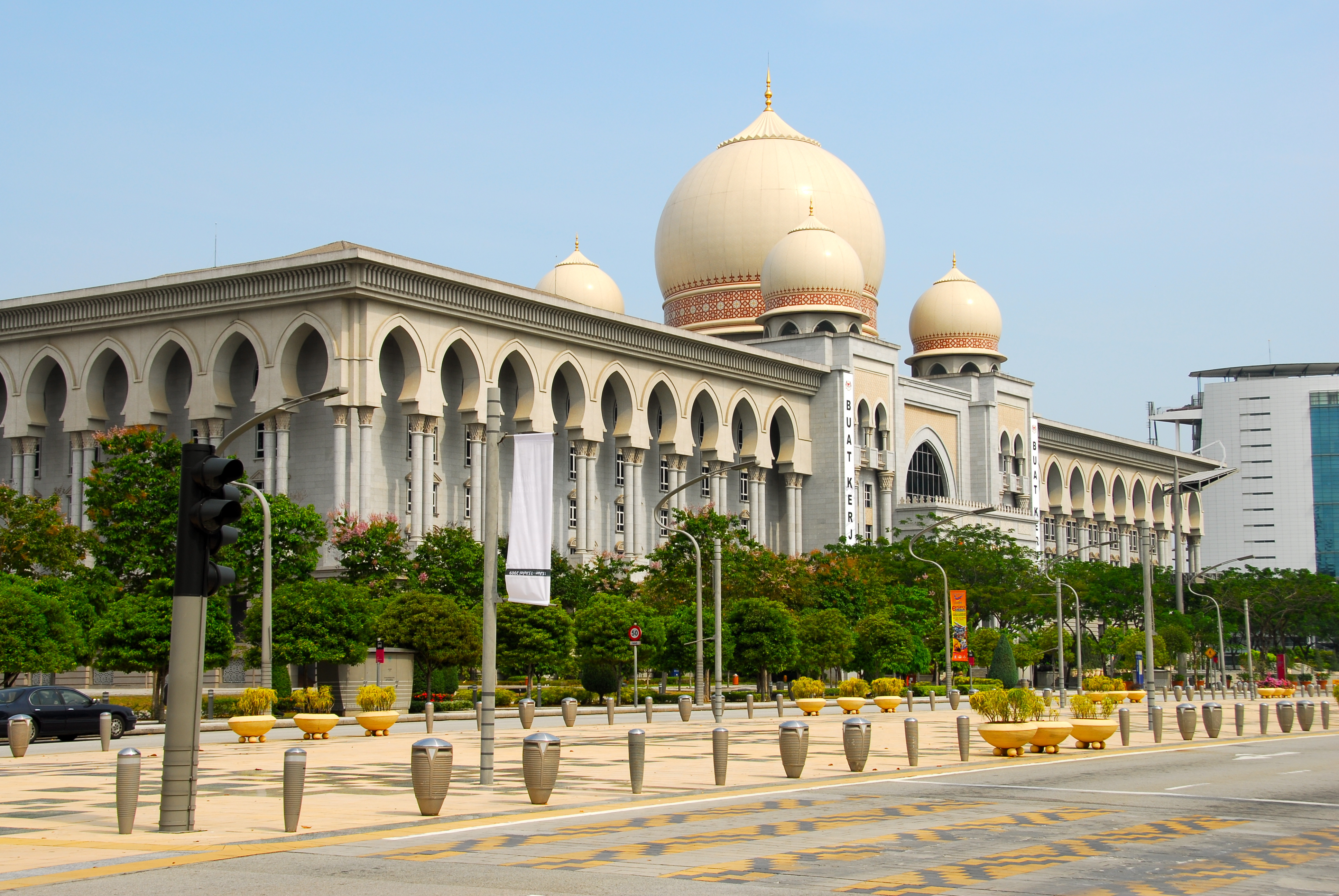|
Kota Kinabalu Court Complex
Kota Kinabalu Court Complex ( ms, Kompleks Mahkamah Kota Kinabalu) is a court complex located on a 2.5 hectares (6.25-acre) site land atop Punai Hill in Kota Kinabalu, Sabah, Malaysia. History The new court complex began to be constructed on 22 July 2014 through federal-funded project since its groundbreaking in April of the same year at a cost of RM177 million as the replacement of an old single high court building before it was completed in 2018. Although the construction completion was delayed for another few months, the developer managed to saved about RM1.4 million from the RM177 allocation by the federal government. In April 2019, the Integrated Court System (ICS) being installed on the complex to improve court management. Features The new complex design combining three Sabah's ethnic elements, namely the Kadazan-Dusun, Bajau Laut and Murut that also incorporated motifs of the country national flower of ''Hibiscus rosa-sinensis'' (Chinese hibiscus), and Sabah's off ... [...More Info...] [...Related Items...] OR: [Wikipedia] [Google] [Baidu] |
Court
A court is any person or institution, often as a government institution, with the authority to adjudicate legal disputes between parties and carry out the administration of justice in civil, criminal, and administrative matters in accordance with the rule of law. In both common law and civil law legal systems, courts are the central means for dispute resolution, and it is generally understood that all people have an ability to bring their claims before a court. Similarly, the rights of those accused of a crime include the right to present a defense before a court. The system of courts that interprets and applies the law is collectively known as the judiciary. The place where a court sits is known as a venue. The room where court proceedings occur is known as a courtroom, and the building as a courthouse; court facilities range from simple and very small facilities in rural communities to large complex facilities in urban communities. The practical authority given to ... [...More Info...] [...Related Items...] OR: [Wikipedia] [Google] [Baidu] |
Murut People
The Murut are an indigenous ethnic group, comprising 29 sub-ethnic groups inhabiting the northern inland regions of Borneo. The Murutic languages are a family of half a dozen closely related Austronesian languages. The Murut can be found mainly in Sabah, Malaysia including in Sarawak, Malaysia, Brunei, and Kalimantan, Indonesia. Etymology The literal translation of ''murut'' is "hill people". Demographics A large percentage of the Murut communities are in the southwest interior of Sabah, East Malaysia, specifically the districts of Keningau, Tenom, Nabawan, and Beaufort along the Sapulut and Padas rivers. They can also be found inhabiting the border areas of Sarawak, (especially around the Lawas and Limbang areas, where they are also referred to as Tagal people), North Kalimantan (traditionally concentrated in Malinau and Nunukan), and Brunei. The Murut population in Brunei is mainly found in the sparsely populated Temburong district, but are actually consisting of Sout ... [...More Info...] [...Related Items...] OR: [Wikipedia] [Google] [Baidu] |
Sessions Court
A Sessions Court or even known as the Court of Sessions Judge is a court of law which exists in several Commonwealth countries. A Court of Session is the highest criminal court in a district and the court of first instance for trying serious offences, i.e., those carrying punishment of imprisonment of more than seven years, life imprisonment, or death. Bangladesh Sessions Court is a type of lower court in Bangladesh that deals with criminal cases. The Code of Criminal Procedure enables government to establish sessions court in every district or metropolitan city of Bangladesh. Based on location of establishment, Sessions courts are two type, namely * District Sessions Courts * Metropolitan Sessions Courts With the introduction of Metropolitan Police, the amended version of CrPC made it essential for the government to establish separate courts for metropolitan cities. Since then, Metropolitan Sessions Courts have been established in Bangladesh. For districts, both of criminal and ... [...More Info...] [...Related Items...] OR: [Wikipedia] [Google] [Baidu] |
Magistrates' Court
A magistrates' court is a lower court where, in several jurisdictions, all criminal proceedings start. Also some civil matters may be dealt with here, such as family proceedings. Courts * Magistrates' court (England and Wales) * Magistrate's Court of Jersey * Magistrates' court (Hong Kong) * Magistrate's courts of Israel * Magistrate's court (South Africa) * District Court (New Zealand), replaced magistrate's courts in 1980 * District Court (Ireland), the main court of summary jurisdiction in Ireland * Magistrate's court (Russia) * Magistrate's court (Sri Lanka) Australian courts * Magistrates Court of the Australian Capital Territory * Magistrates court (Northern Territory) * Magistrates Court of Queensland * Magistrates Court of South Australia * Magistrates Court of Tasmania * Magistrates' Court of Victoria * Magistrates Court of Western Australia * Local Court of New South Wales * Federal Circuit Court of Australia (initially the Federal Magistrate's Court of Australia. T ... [...More Info...] [...Related Items...] OR: [Wikipedia] [Google] [Baidu] |
High Courts (Malaysia)
The high courts in Malaysia are the third-highest courts in the hierarchy of courts, after the Federal Court and the Court of Appeal. Article 121 of the Constitution of Malaysia provides that there shall be two high courts of co-ordinate jurisdiction—the High Court in Malaya and the High Court in Sabah and Sarawak (before 1994, the High Court in Borneo). Before 1969, the High Court in Singapore was also part of the Malaysian courts system (see Law of Singapore). The High Court in Malaya has its principal registry in Kuala Lumpur, with other registries to be found in all states in Peninsular Malaysia, while the High Court in Sabah and Sarawak has its principal registry in Kuching, with other registries elsewhere in Sabah and Sarawak. There are in total 22 high court registries across all 13 states in Malaysia. The two High Courts also travel on circuit to other smaller towns. The two high courts, the Court of Appeal and the Federal Court are classified as superior courts, whil ... [...More Info...] [...Related Items...] OR: [Wikipedia] [Google] [Baidu] |
Putrajaya
Putrajaya (), officially the Federal Territory of Putrajaya ( ms, Wilayah Persekutuan Putrajaya), is a planned capital city which functions as the administrative capital and the judicial capital of Malaysia. The seat of the federal government of Malaysia was moved in 1999 from Kuala Lumpur to Putrajaya because of overcrowding and congestion in the former, whilst the seat of the judiciary of Malaysia was later moved to Putrajaya in 2003. Kuala Lumpur remains as Malaysia's national capital city per the constitution and is still the seat of the head of state (Yang di-Pertuan Agong) and the national legislature (Parliament of Malaysia), as well as being the country's commercial and financial centre. The establishment of Putrajaya was the idea of the then-Prime Minister Mahathir Mohamad. The development of Putrajaya began in August 1995 and it was completed at an estimated cost of US$8.1 billion. On February 1, 2001, Putrajaya became Malaysia's third federal territory, after Kual ... [...More Info...] [...Related Items...] OR: [Wikipedia] [Google] [Baidu] |
Palace Of Justice, Putrajaya
The Palace of Justice ( ms, Istana Kehakiman, Jawi: ) houses the Malaysian Court of Appeal and Federal Court, which moved to Putrajaya from the Sultan Abdul Samad Building in Kuala Lumpur in 2003. History Due to the need for a proper office of the head of the judicial system in Malaysia, a location within the Precinct 3 of Putrajaya was identified for this purpose. aQidea Architect was commissioned to design the building after finishing the nearby Prime Minister's Office. The building houses two Federal Courts, six Courts of Appeal, the Chief Registrar's Office, two registries for the Federal Court, the Court of Appeal (as required under Articles 121(1B) and 121(2)), a conference hall, a library, and a museum. The complex has an intricate network of passages which segregate the judges, witnesses, public, and the accused leading to the courts from the car park or area of arrival. The design is about bringing about "order" and order is the theme of the day as the layouts ar ... [...More Info...] [...Related Items...] OR: [Wikipedia] [Google] [Baidu] |
Rafflesia
''Rafflesia'' () is a genus of parasitic flowering plants in the family Rafflesiaceae. The species have enormous flowers, the buds rising from the ground or directly from the lower stems of their host plants; one species has the largest flowers in the world. Plants of the World Online lists up to 41 species from this genus, all of them are found throughout Southeast Asia. Western Europeans first learned about plants of this genus from French surgeon and naturalist Louis Deschamps when he was in Java between 1791 and 1794; but his notes and illustrations, seized by the British in 1803, were not available to western science until 1861. The first British person to see one was Joseph Arnold in 1818, in the Indonesia rainforest in Bengkulu, Sumatra, after a Malay servant working for him discovered a flower and pointed it out to him. The flower, and the genus, was later named after Stamford Raffles, the leader of the expedition and the founder of the British colony of Singapore. The f ... [...More Info...] [...Related Items...] OR: [Wikipedia] [Google] [Baidu] |
Hibiscus Rosa-sinensis
''Hibiscus rosa-sinensis'', known colloquially as Chinese hibiscus, China rose, Hawaiian hibiscus, rose mallow and shoeblack plant, is a species of tropical hibiscus, a flowering plant in the Hibisceae Tribe (biology), tribe of the family (biology), family Malvaceae. It is widely cultivated as an ornamental plant in the tropics and subtropics, but its native range is Vanuatu. Description Tree and leaves ''Hibiscus rosa-sinensis'' is a bushy, evergreen shrub or small tree growing tall and wide. The plant has a branched tap root, taproot. Its stem is aerial, erect, green, cylindrical, and branched. Its leaves are simple and petiole (botany), petiolate, with alternate ''phyllotaxy''. The leaf shape is ovate, the tip is acute, and the margin is serrated. ''Venation'' is Reticular venation, unicostate reticulate, meaning the leaves' veins are branched or divergent. Its surface is glossy. Free lateral stipules are present. Flowers Its flowers bloom in summer and autumn. ... [...More Info...] [...Related Items...] OR: [Wikipedia] [Google] [Baidu] |
Floral Emblem
In a number of countries, plants have been chosen as symbols to represent specific geographic areas. Some countries have a country-wide floral emblem; others in addition have symbols representing subdivisions. Different processes have been used to adopt these symbols – some are conferred by government bodies, whereas others are the result of informal public polls. The term floral emblem, which refers to flowers specifically, is primarily used in Australia and Canada. In the United States, the term state flower is more often used. National plants Africa Mauritius The national flower of Mauritius is '' Trochetia boutoniana''. Seychelles The national flower of the Seychelles is the tropicbird orchid (known locally as ''orkid payanke''), '' Angraecum eburneum''. South Africa The national flower of South Africa is the King Protea, ''Protea cynaroides''. Tunisia The national flower of Tunisia is jasmine. It was chosen as a symbol for the 2010 Tunisian Revolution. Asia Ban ... [...More Info...] [...Related Items...] OR: [Wikipedia] [Google] [Baidu] |
Bajau People
The Sama-Bajau include several Austronesian ethnic groups of Maritime Southeast Asia. The name collectively refers to related people who usually call themselves the Sama or Samah (formally A'a Sama, "Sama people"); or are known by the exonym Bajau (, also spelled Badjao, Bajaw, Badjau, Badjaw, Bajo or Bayao). They usually live a seaborne lifestyle and use small wooden sailing vessels such as the '' perahu'' (''layag'' in Meranau), ''djenging'' (''balutu''), '' lepa'', and ''vinta'' (''pilang''). Some Sama-Bajau groups native to Sabah are also known for their traditional horse culture. The Sama-Bajau are the dominant ethnic group of the islands of Tawi-Tawi in the Philippines. They are also found in other islands of the Sulu Archipelago, coastal areas of Mindanao, northern and eastern Borneo, Sulawesi, and throughout the eastern Indonesian islands. In the Philippines, they are grouped with the religiously similar Moro people. Within the last fifty years, many of the Filipi ... [...More Info...] [...Related Items...] OR: [Wikipedia] [Google] [Baidu] |
Kota Kinabalu
, image_skyline = , image_caption = From top, left to right, bottom:Kota Kinabalu skyline, Wawasan intersection, Tun Mustapha Tower, Kota Kinabalu Coastal Highway, the Kota Kinabalu City Mosque, the Wisma Tun Fuad Stephens, Marlin and I❤KK Statue, Gaya Street during Chinese New Year. , image_flag = Flag of Kota Kinabalu.svg , image_seal = Seal of Kota Kinabalu.svg , image_map = , map_caption = Location of Kota Kinabalu in Sabah , pushpin_map = #Malaysia Sabah#Malaysia#Southeast Asia#Asia , pushpin_mapsize = 275px , pushpin_map_caption = Kota Kinabalu in Sabah , coordinates = , subdivision_type = Country , subdivision_type1 = State , subdivision_name = , subdivision_name1 = , subdivision_type2 = ... [...More Info...] [...Related Items...] OR: [Wikipedia] [Google] [Baidu] |







_Principe.jpg)

.jpg)
